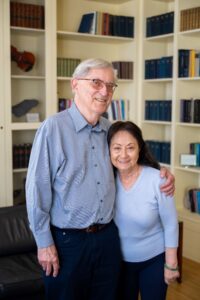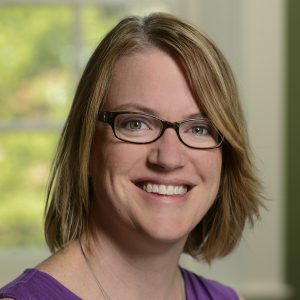Johns Hopkins UniversityEst. 1876
America’s First Research University
When David Gakenheimer was a Johns Hopkins undergraduate in the early 1960s, collaboration between engineers and doctors was rare. But Gakenheimer, Engr ’65, saw untapped potential — possibilities that, decades later, he is helping to unlock. Now, through a combination of planned and current-use giving, he is investing in the integration of engineering and medicine, empowering the next generation of innovators to revolutionize patient care.

“It’s not that we didn’t know there were some interesting problems, but there was no motivation on either side of the table,” recalls Gakenheimer, who later earned a PhD in applied mechanics at Caltech and patented one of the first FDA-reviewed medical devices using artificial intelligence (AI). “But now the ballgame is really very different. There have been some dynamic products developed using AI and engineering methods that doctors really appreciate.”
To help drive the future of biomedical engineering, Gakenheimer has made a lasting commitment through his estate plan to support the Whiting School of Engineering. He is providing for Hopkins by naming the university as the beneficiary of his IRAs and a testamentary charitable remainder unitrust (CRUT).
His estate gift will endow a professorship, an investment Whiting’s Vice Dean for Faculty Lori Graham-Brady says can have a broad impact across the entire school.
“Named professorships enable us to attract and retain top faculty who drive engineering innovation and elevate Whiting’s scholarly impact,” she explains. “Professors in these roles play a transformative part in expanding research areas and strengthening existing programs. In some cases, professorships help us retain top talent — highly sought-after faculty that other institutions would love to recruit.”
For faculty, these positions also provide time and resources to explore bold, high-risk ideas.
“The potential payoff, both for the faculty member and the school, is enormous,” Graham-Brady adds.
Beyond his planned giving, Gakenheimer is also supporting the next generation of researchers. He funds doctoral students at the Johns Hopkins University Institute for Computational Medicine who are pioneering research into heart arrhythmias. It’s a topic of personal interest, as he lives with atrial fibrillation (Afib).
“It’s a very important scientific area for the future,” he says.
Gakenheimer has also enjoyed interacting with the fellows, even from his home in California.
“Having the fellowship is a lot of fun because I get to meet the students, mostly by Zoom,” he says. “I enjoy staying engaged with people at Hopkins. It keeps me involved and sharp.”
The benefits of a fellowship extend beyond mentorship. Like named professorships for faculty, fellowships provide students with the freedom to explore innovative ideas without the constraints of predefined research grant requirements.
“PhD students are the engine that drives research across the university,” Graham-Brady says. “They’re the source of so many new ideas and innovative approaches. In many ways, research just couldn’t happen without them.”

Gakenheimer was an early explorer of AI in medicine, diving into the field in the late 1990s after a career in aerospace defense. Today, Graham-Brady’s own lab is researching AI’s potential in extreme environments, highlighting its evolving role in science and engineering.
“When people think of AI, they often picture tools like ChatGPT and Siri, which are amazing applications,” she says. “But AI has far greater potential. It can generate new research directions, synthesize vast and varied data, and enhance decision-making, all in collaboration with human expertise.”
As AI continues to transform research and medicine, Gakenheimer remains proud of Hopkins’ leadership in engineering and medical innovation, particularly within the Whiting School.
“I greatly appreciate my education at Hopkins,” he says. “I want to help continue the tradition of groundbreaking research.”
This story first appeared in the Spring/Summer 2025 edition of Planning Matters.
Topics: Alumni, Faculty and Staff, Fuel Discovery, Support Scholars